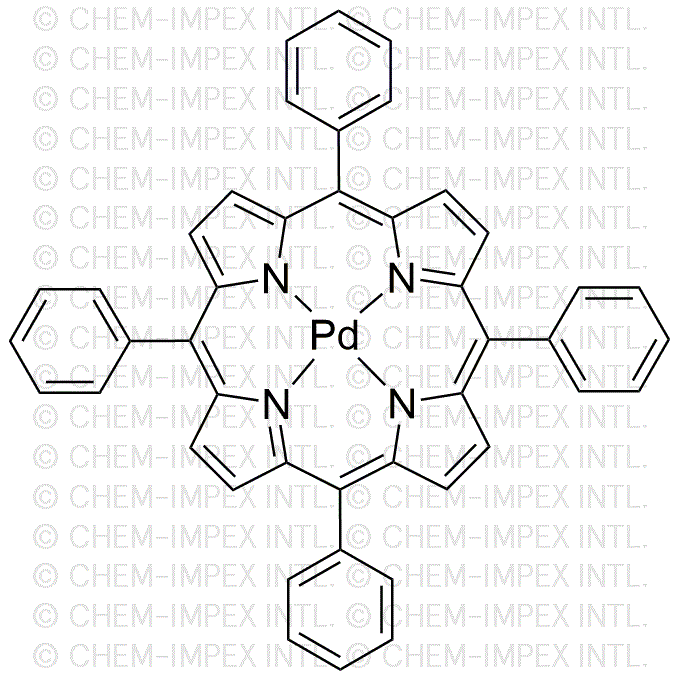Palladium(II) 5,10,15,20-(tetraphenyl)porphyrin is widely utilized in research focused on:
- Catalysis: This compound serves as an effective catalyst in various organic reactions, including cross-coupling reactions, which are essential in the synthesis of pharmaceuticals and agrochemicals.
- Sensor Development: Its unique optical properties make it suitable for developing sensors that detect gases or biomolecules, enhancing environmental monitoring and medical diagnostics.
- Photodynamic Therapy: In the medical field, it is explored for use in photodynamic therapy, a treatment that uses light to activate a photosensitizer for targeted cancer therapy.
- Material Science: The compound is employed in the creation of advanced materials, such as organic photovoltaics, which can improve the efficiency of solar cells.
- Research in Nanotechnology: It plays a crucial role in nanotechnology, particularly in the synthesis of nanoparticles that can be used in drug delivery systems and imaging applications.
General Information
Properties
Safety and Regulations
Applications
Palladium(II) 5,10,15,20-(tetraphenyl)porphyrin is widely utilized in research focused on:
- Catalysis: This compound serves as an effective catalyst in various organic reactions, including cross-coupling reactions, which are essential in the synthesis of pharmaceuticals and agrochemicals.
- Sensor Development: Its unique optical properties make it suitable for developing sensors that detect gases or biomolecules, enhancing environmental monitoring and medical diagnostics.
- Photodynamic Therapy: In the medical field, it is explored for use in photodynamic therapy, a treatment that uses light to activate a photosensitizer for targeted cancer therapy.
- Material Science: The compound is employed in the creation of advanced materials, such as organic photovoltaics, which can improve the efficiency of solar cells.
- Research in Nanotechnology: It plays a crucial role in nanotechnology, particularly in the synthesis of nanoparticles that can be used in drug delivery systems and imaging applications.
Documents
Safety Data Sheets (SDS)
The SDS provides comprehensive safety information on handling, storage, and disposal of the product.
Product Specification (PS)
The PS provides a comprehensive breakdown of the product’s properties, including chemical composition, physical state, purity, and storage requirements. It also details acceptable quality ranges and the product's intended applications.
Certificates of Analysis (COA)
Search for Certificates of Analysis (COA) by entering the products Lot Number. Lot and Batch Numbers can be found on a product’s label following the words ‘Lot’ or ‘Batch’.
Numéro de catalogue
Numéro de lot/série
Certificates Of Origin (COO)
This COO confirms the country where the product was manufactured, and also details the materials and components used in it and whether it is derived from natural, synthetic, or other specific sources. This certificate may be required for customs, trade, and regulatory compliance.
Numéro de catalogue
Numéro de lot/série
Safety Data Sheets (SDS)
The SDS provides comprehensive safety information on handling, storage, and disposal of the product.
DownloadProduct Specification (PS)
The PS provides a comprehensive breakdown of the product’s properties, including chemical composition, physical state, purity, and storage requirements. It also details acceptable quality ranges and the product's intended applications.
DownloadCertificates of Analysis (COA)
Search for Certificates of Analysis (COA) by entering the products Lot Number. Lot and Batch Numbers can be found on a product’s label following the words ‘Lot’ or ‘Batch’.
Numéro de catalogue
Numéro de lot/série
Certificates Of Origin (COO)
This COO confirms the country where the product was manufactured, and also details the materials and components used in it and whether it is derived from natural, synthetic, or other specific sources. This certificate may be required for customs, trade, and regulatory compliance.


